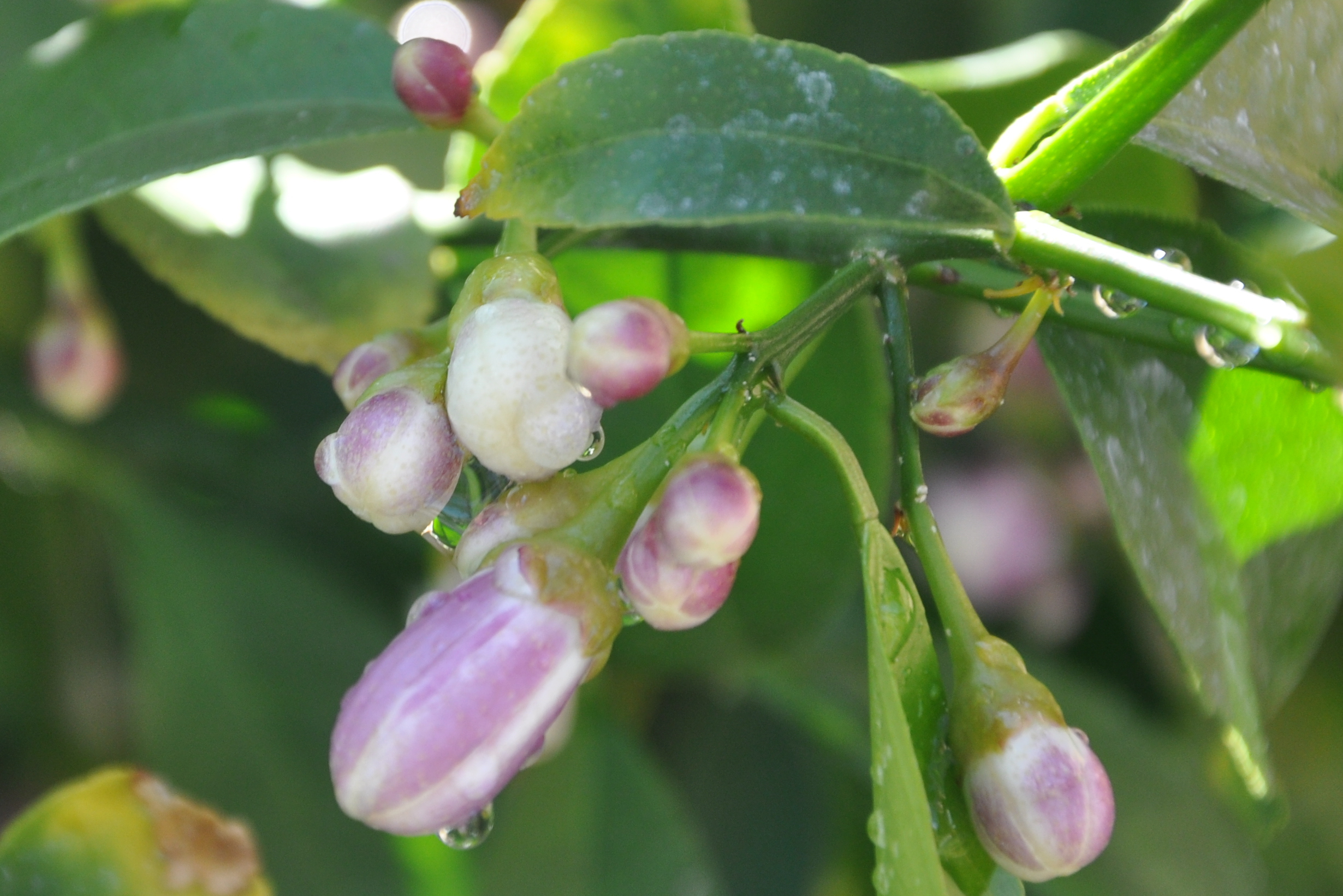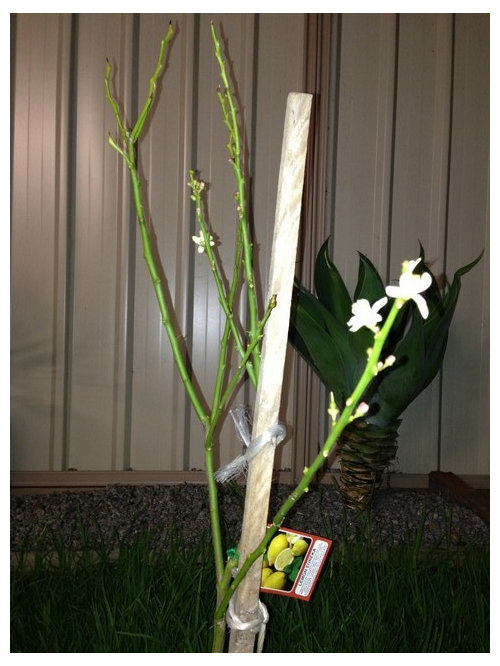When there a no flowers on your lemon tree, it will make sad. This is because flowers equal to fruit, and a lack of blooms means your tree will not produce fruit.
There are many reasons for this unfortunate occurrence, including;
- Incorrect cultivation
- Lack of nutrients
- Insufficient watering
- Poor rootstock choice
Sometimes the plant may bloom but fails to fruit; this is because it is not old enough.
There are many reasons why there may be no flowers on a lemon tree. But to know why your lemon tree does not have flowers but isn’t blooming, you need to pay close attention to the tree to pinpoint the exact cause.
Lemon tree flower buds

The lemon tree flower buds often have lilac, white, and sometimes cream-colored buds. Lemon flower buds are scented and have a citrusy smell even at the early bud stage. The buds develop into flowers and later into fruit after pollination.
Many lemon flower buds induce in early November, but they become noticeable and pronounced in January. While lemon buds are purple, lemon flowers are often white with yellowish edges and purple stalks.
Purple buds on the lemon tree
The purple buds on a lemon tree are flower buds. Purple buds will slowly develop into white Penta-petalled flowers with purple stalks over 3-5 months if environmental conditions are favorable.
Sadly, purple flower buds may fall off before the flowering stage even commences for various reasons. Still, most commonly, plants produce way more buds and flowers than necessary. For the lemon tree to keep the flower numbers manageable, it is normal for a plant to drop a few buds and blossoms.
Why are there no flowers on a lemon tree
There are many reasons why a lemon tree may field to blossom. From frost damage to inadequate watering and even lack of soil nutrients, various factors could result in having a flower-less lemon tree.
Listed below are the primary reasons why there are no flowers on a lemon tree.
1. Flower buds were pruned off.
Sometimes farmers may prune off branches that have flower buds mistakenly. Pruning is an integral facet of lemon tree care.
Sadly, however, a farmer may prune off buds that would have blooms in spring. That is why many arborists advise that before you prune, examine the tree and decide which branches you need to prune.
If you otherwise go in with your pruning shears without a concrete plan, you risk cutting off some wanted branches as you prune.
2. Frost damage
Buds are sensitive to frost damage. They are young plant tissues and this means that they aren’t hardy enough yet to survive the snow. If the temperature drops shortly after budding, the flower buds’ chances of frost damage are very high.
The reason you don’t see flowers on your lemon tree this season could be because the buds were destroyed by frost during their childhood stage. Flowers develop from flower buds, and if you have damaged buds, it is unlikely that you will have any flowers.
3. Inadequate watering and watering irregularities

Lemon, like other citrus trees, is thirsty, which means that they like water. It is essential for lemon farmers to water enough during the flowering stage because Flowers’ production is water-intensive.
If the plant doesn’t get enough water. The tree will respond by dropping flower buds and even flowers earlier on, and if the problem persists, you will end up with a flowerless tree.
Irregular watering could shock the plant and result in a drop in shoots and appendages as a response. Some lemon trees lose flowers as a shock response to irregular watering, leaving no flowers on the lemon tree.
Overwatering can also inhibit flower formation.
4. Lack of soil nutrients
If there aren’t enough nutrients in the soil, the lemon will not support flower buds and later on flower formation. This means that the plant will invest the nutrients available in foliage and root development without flower bud formation.
Essential nutrients like nitrogen, phosphorus, and potassium or necessary for flower formation and survival and must be available for lemon flowering. Although all essential nutrients are vital, potassium and phosphorus are often limiting factors.
It is crucial to fertilize before budding or bud inducement. A farmer needs to fertilize the soil with fertilizers rich in potassium and phosphorus to replenish nutrients in the soil store.
It is also crucial for a farmer to include other relevant micronutrients like calcium for blooming boosting.
It is vital to fertilize as per the manufacturer’s instructions because over-fertilizing will inhibit flower development. After all, a nutrient surge will encourage root and foliage growth at the expense of flowering.
Lemon tree flowers falling off.
Lemon tree flowers fall off the tree (abort) for several causes. Flower-drop may be the reason why your lemon tree is flower-less.
Why would flowers fall off a lemon tree?
1. Unfavorable temperature
Lemons are very sensitive to extreme temperatures. Unusually cold temperatures will cause frost damage. You can identify as mushy browning on buds and flowers followed by flower-fall. Too high temperatures will burn and dry the flowers, which also ends in flower drop.
2. Overwatering
The ugliest consequence of overwatering is the root-rot. Damaged roots will not absorb nutrients even when present in the soil, causing the plant to starve. Malnutrition in plants not only causes blossom drop but could also kill the plant.
3. Transplant shock
Lemon trees often get accustomed to the area in which they are growing. Sudden changes in the location of a plant will exert pressure and shock to the plant.
The most common reaction of plants to transplant shock is losing leaves and blossoms. If you just transplanted and notice that your lemons are losing flowers, it’s probably because of transplant shock.
4. Potassium deficiency
Potassium is required for healthy cell-wall development. One of the significant precursors of blossom fall is a potassium deficiency caused by cell adhesion’s weakening due to a decline in potassium in the plant.
Why does my lemon tree have flowers but no leaves?

It is rare that a lemon plant loses its leaves but retains flowers because most of the lemon abscission causes affect both the leaves and flowers.
The only reason why your lemon tree has flowers but no leaves, is because it has lost or shed the leaves, which is often because of transplant shock.
While transplant shock can sometimes cause flower drop, it is not as severe as the leaf drop impact for the same cause. Post-transplantation, your tree might lose all of the leaves but keep some flowers.
If you recently transplanted or moved the plants and then noticed that all the leaves are falling, leaving only flowers, you needn’t panic. The best thing you can do is continue to water and fertilize and show the plant some TLC until it has recovered.
FAQs
You can get the lemon tree to flower by paying close attention to the plant.
Ensure that your water is adequately and consistently nourished and water full since flowers require a steady water supply for healthy growth.
Fertilize after budding with phosphorus and potassium-rich fertilizer. Don’t forget the trace elements.
Control the ambient temperatures and ensure to keep your lemon tree warm and protected from frost with insulating turf if the tree is immovable and moving the plant in during winter.
If lemon flowers are pollinated, environmental and soil conditions are right, lemon tree flowers should—the months between 4 to 12 months.
It is usual for the majority of blossoms to fall off. So, it is expected that you will lose about 80% of the flowers because a lemon tree produces more blossoms than necessary, and some of them need to be self pruned.
Meyer lemons, like all other lemon trees, often bloom in spring. However, flower formation with bud inducement may start as early as November.
Lemon trees often produce fruit 4-12 months after pollination during spring. You can expect to harvest lemons in late fall and winter but also in summer if you’re lucky.
Final thoughts
Having a flowerless tree that should have bloomed can be puzzling and even depressing for the farmer. It is important to remember that a lemon for a lemon tree to bud and then flower, the ambient temperature, watering, and fertilizing should all be optimal.
They say the grass is greener where you water it. Likewise, lemons bloom where you care for them. So, be generous with care to your lemon tree, and it will reward you with strongly scented blooms come next spring.
